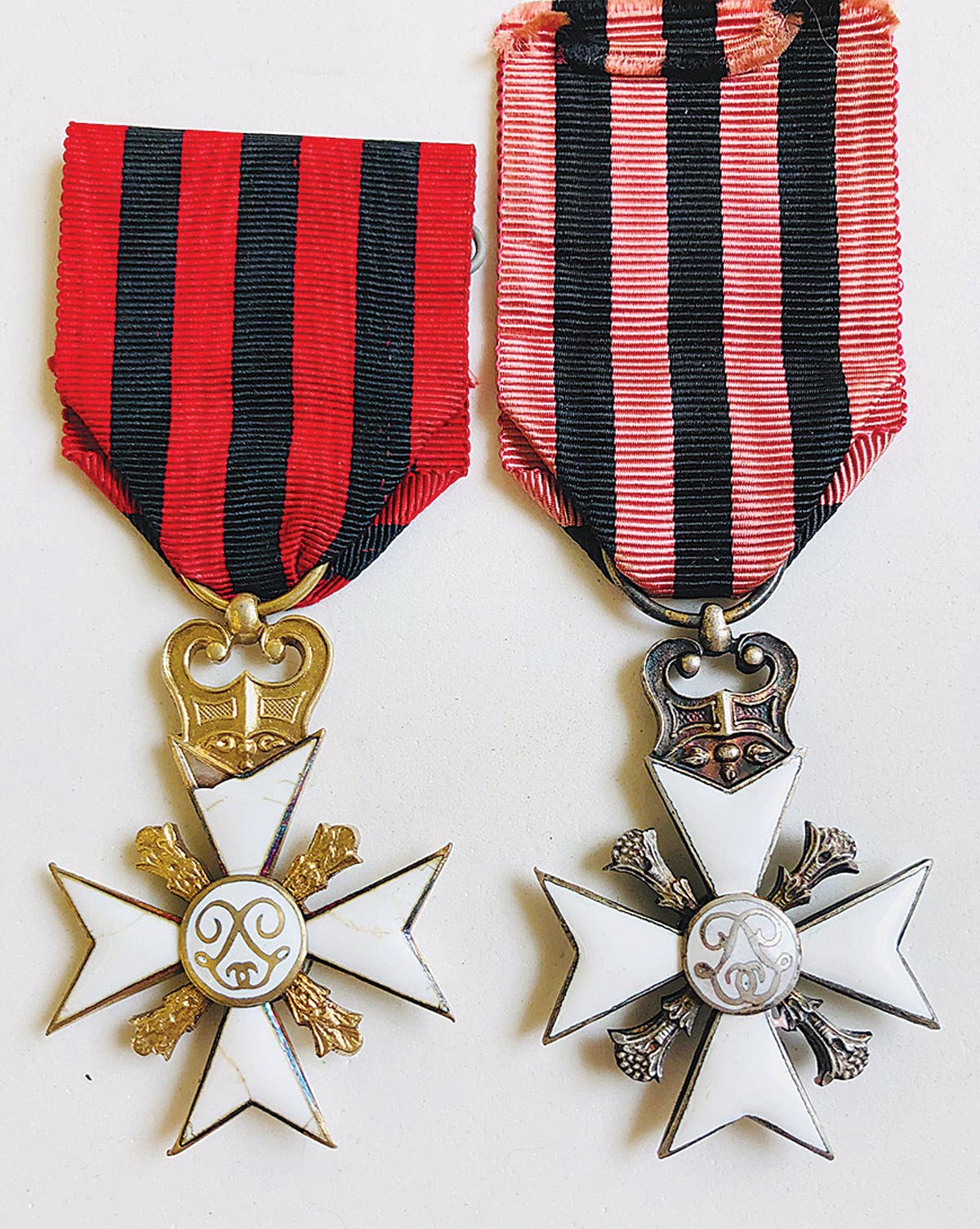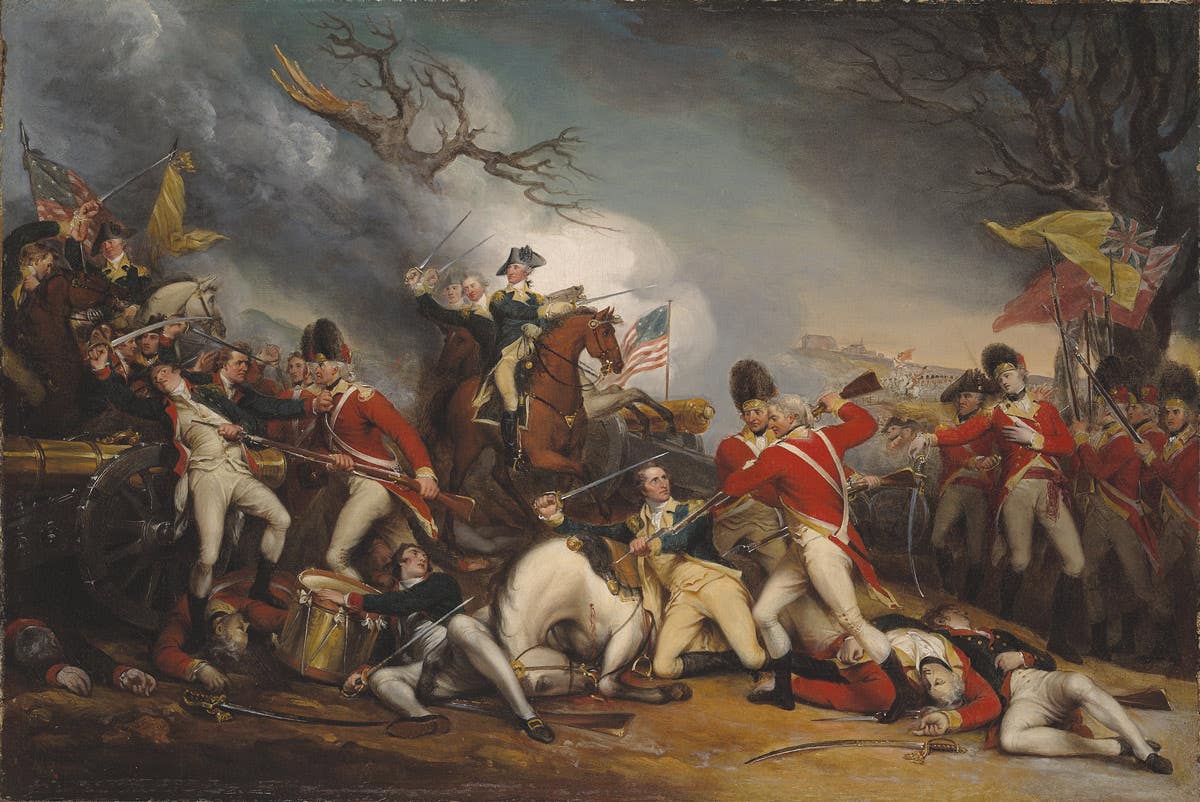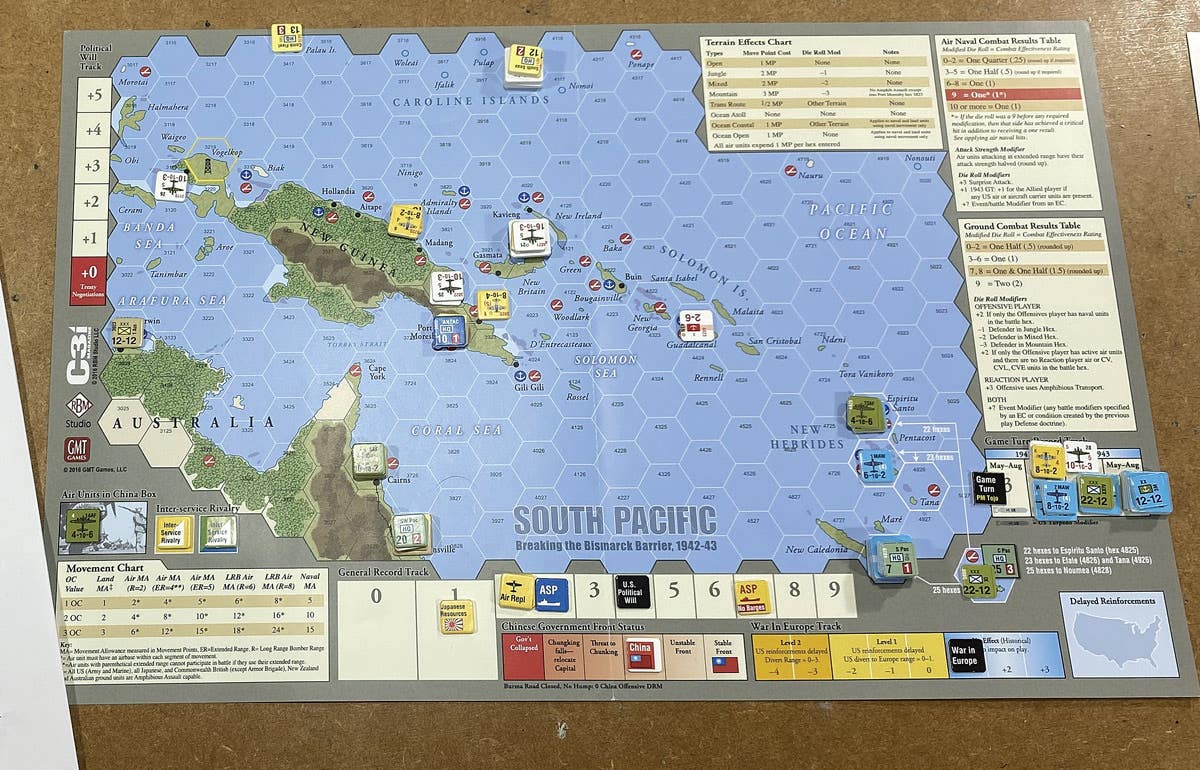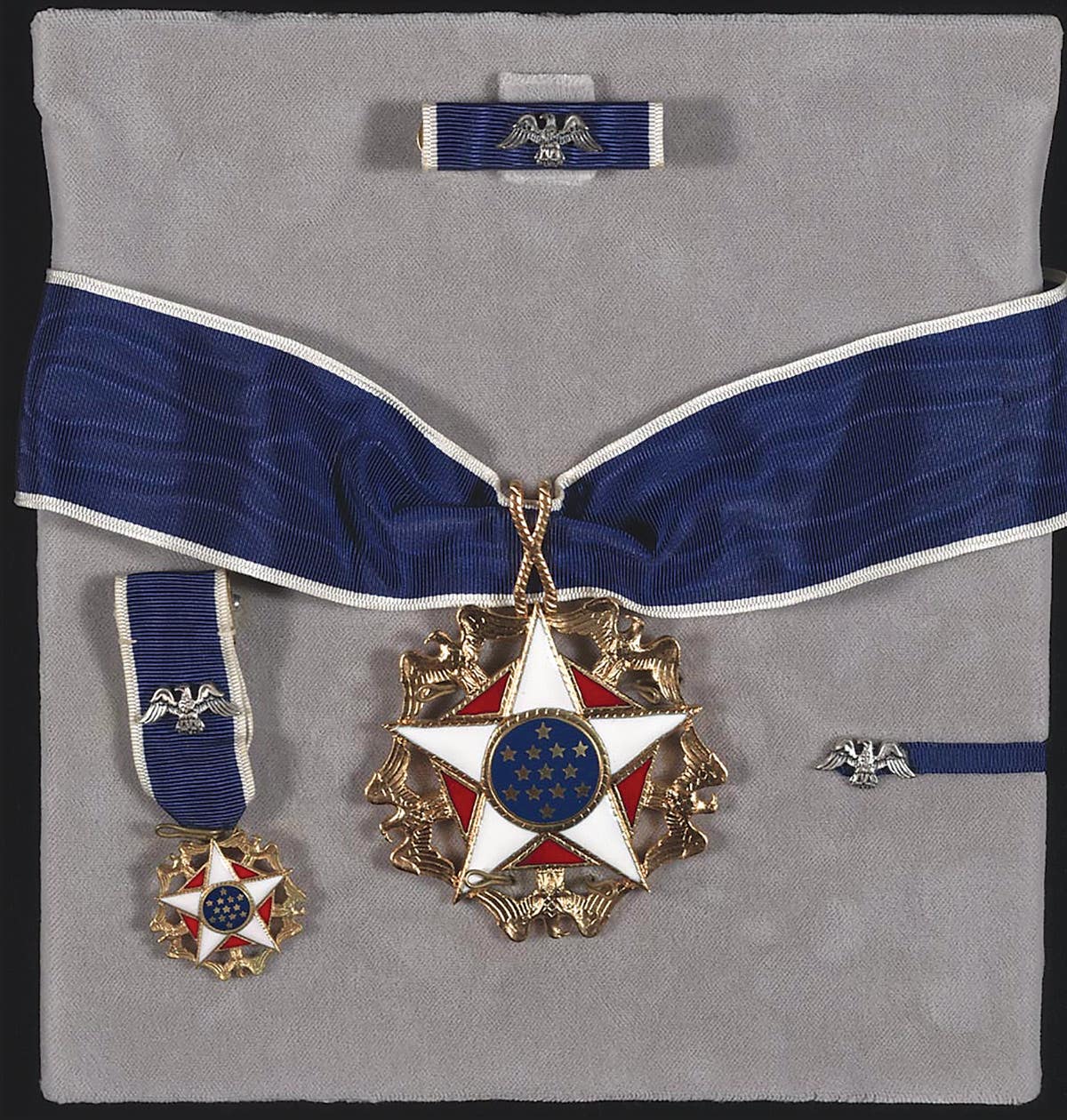Royal Italian Air Force Aircrew Badges of WWII
Italy authorized this badge for its Air Force on December 13, 1940
Air crew members of the Royal Air Force of Italy (Regia Aeronautica Italiana) wore a small pin-backed badge above the uniform’s left pocket. Authorized on December 13, 1940 the badge was a silver metal circle, about 18mm in diameter, below a royal crown, with red cushion inserts.
In the center, actually to the right of center is an upright Fascist “Littorio” with a silver wing protruding from the Littorio” to the left. Around the open circle’s frame are raised letters reading, “EQUIPAGGIO DI VOLO” (flight crew). Another version of this badge has bronze Littorio in bronze instead of silver with the inscription incised and filled with blue paint. A decree of July 1, 1941, abolished these badges and substituted badges in the form of a silver wing instead.
Air crew who flew torpedo bombers wore a small metal insignia over their left breast pocket consisting of a thin open gold ring, about 15 mm in diameter, below a gold crown with red insert cushions, and pin-backed. A silver torpedo about 25mm long is affixed across the ring, pointing downward. At the bottom is an incised inscription filled with black paint reading “AEROSILURANTI” (aerial torpedoes). Protruding from each side of the gold ring are horizontal gold wings about 8mm long.
Contemporary photos show both the flight crew badge and torpedo plane badges being worn together, side-by-side, above the left pocket. Pilots and crew are also seen in photos wearing the torpedo plane badge in a large embroidered form on their flight suits and jackets.
The decree of July 1, 1942, which cancelled the flight crew badge, inaugurated a set of six metal wings, 80mm wide for various specialists. They can also be found embroidered in silver wire, but this is unofficial and not authorized.
The stylized wings are silver finished, horizontal, and pin backed. In the center of the wings is a thin circular border, about 16mm in diameter, encircling the specialist’s particular symbol. For electrical mechanics in flight crews, a horizontal lightning bolt behind two crossed hammers is used. For engine specialists, the bow of a five-cylinder rotary engine is used. Mounters are designated by a three-bladed propeller; radio operators by lightning bolts; armorers by two crossed machine guns behind a flaming grenade and photographers by a representation of a camera shutter.
Mussolini’s socialist air force, the A.N.R. (Aeronautica Nazionale Repubblicana), came into existence in the latter months of 1943 and continued to use these same specialist wings. They were made of a poor grade grey metal and easily identified.
Royal Air Force specialist wings also continued to be worn by the post-war Air Force of the Republic of Italy. These have a bright chrome finish with several additional specialist categories added such as drivers, guards, administration, medical, engineering, electricians, radio aerologist, radio telephonists, and probably others added as the aviation branch expanded and required more specialists. Only six of the various specialists wings were authorized during the WWII and all others are post-war.
You may also enjoy
*As an Amazon Associate, Military Trader / Military Vehicles earns from qualifying purchases.
Clem graduated from Jesuit Catholic Preparatory School in New Orleans in 1948, joined the US Navy Reserves, served in the US Army Signal Corps during the Korean War and attended the US Merchant Marine Academy.
He served 30 years aboard numerous merchant ships which allowed him to pursue his childhood passion of collecting military insignia. During his seven years of sailing in and out of Vietnam, Clem acquired an unimaginable collection of Vietnam War insignia. Every country’s port was a gold mine of tailor shops and junk stores.
In 1989, Clem took over the Vietnam Insignia Collectors Newsletter from Cecil Smyth. He quickly became the de facto overseer of the hobby.
Clem contributed numerous articles on various military insignia to Military Trader and Military Advisor. Clem died at the age of 87 on 3 February 2018. His knowledge and expertise will be missed. He will long be remembered. — Bill Brooks







